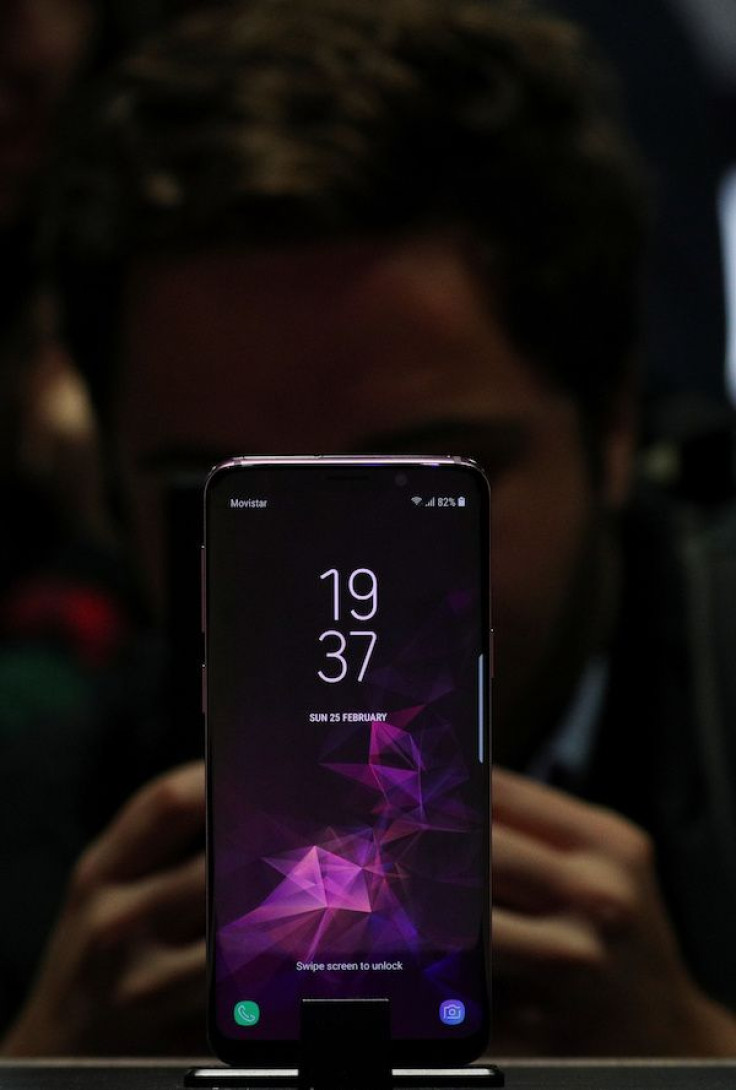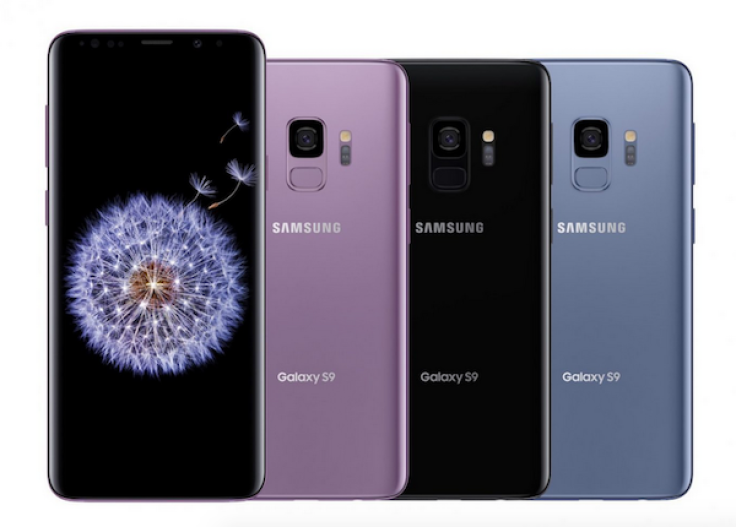LG G7 ThinQ Vs. Samsung Galaxy S9: Comparison Of Specs, Features

LG Electronics officially introduced its successor to last year’s G6 flagship earlier this week. So it’s high time for the LG G7 ThinQ to be pitted against Samsung’s Galaxy S9, which was launched in February. Both handsets are top-tier offerings of their respective makers; therefore, many consumers may be wondering which one is better. Find out below.
Design
LG started a new design language with the launch of the G7 ThinQ. The flagship device borrows some design elements from its predecessor, but it definitely has a signature style of its own. For instance, the latest G series installment comes with what LG calls the Second Screen, or the display surrounding the cutout that houses its front-facing camera and voice call receiver.
As previously reported, LG refuses to call the new display feature on the G7 ThinQ a notch because this would suggest that the South Korean company copied Apple. Instead, LG is insisting that its new device simply has a unique secondary screen on top of its main display, and it just so happens that the setup makes it seem as though the G7 ThinQ has a display notch. It’s important to note however that the secondary screen is actually part of the main display. Overall, the phone has a 6.1-inch Super Bright QHD+ display with 3120x1440 screen resolution and 19:5:9 FullVision aspect ratio.
LG also modified the appearance of its new G-branded phone’s back. Instead of having horizontally-aligned dual cameras above the fingerprint/power button just like on the G6, the tech company chose to come up with a vertically-aligned dual-camera module just slightly above the fingerprint sensor. Nevertheless, it’s still easy to see the resemblance of the G7 ThinQ to the G6, especially when talking about the overall form of the two devices.

On the other hand, Samsung’s Galaxy S9 is very consistent with the appearance of last year’s Galaxy S8. They don’t just look the same in photos because they are really cut from the same cloth. Both handsets come with a 5.8-inch Curved Super AMOLED Infinity Display with 18:5:9 aspect ratio, 2960x1440 screen resolution and 570 ppi pixel density.
The only evident difference between the Galaxy S8 and the Galaxy S9 is the placement of the fingerprint readers on their back. On the Galaxy S8, the sensor is located on the right side of the back camera. Contrariwise, the biometric module is placed below the primary back lens on the Galaxy S9. It’s safe to assume that Samsung made a rational move after many consumers complained about the placement of the fingerprint reader on the Galaxy S8.

On the whole, the appearances of the two handsets are not too different from each other. They have very minimum bezels and rounded corners. Aside from the notch, the front profiles of both phones look the same. Plus, their colored cases do not extend to the front but they do cover up to the sides. Therefore, the Galaxy S9 and G7 ThinQ aren’t really disparate, design-wise.
Performance
Performance would never be an issue on either phone, since the two of them are equipped with Qualcomm’s Snapdragon 845 processor. The chipset is composed of four 2.8GHz Kryo 385 Gold cores and another four 1.7GHz Kryo Silver cores. The Galaxy S9 comes with 4GB RAM and 64/128/256GB storage options, while the G7 ThinQ has two configurations: 4GB RAM/64GB storage and 6GB RAM/128GB storage.
Samsung’s flagship offering got a 2037 single-core test rating and an 8170 multi-core test rating on GeekBench. On the contrary, the leaked benchmark scores of the G7 ThinQ 4GB model reveal that it performs better with a 2312 single-core test rating and an 8979 multi-core test rating. Despite the differences, there’s no denying that the two flagship phones from South Korea are among the fastest handsets on the market today.
Camera Technology
The camera technology department is also a close fight and boils down to preference. Both the Galaxy S9 and the G7 ThinQ are capable of capturing beautiful, high quality photos because of the advanced technologies they sport. The newly announced G7 ThinQ comes with an upgraded 8-megapixel wide-angle, front-facing snapper and a dual-rear camera module with 16-megapixel lenses. The back camera module is composed of a wide-angle lens and a standard angle lens.
Samsung’s Galaxy S9, on the other hand, has a single 12-megapixel rear camera with Super Speed Dual Pixel sensor. It’s important to note that both the S9 and the G7 ThinQ’s back cameras have optical image stabilization. Samsung choose to retain the S8’s 8-megapixel front-facing camera on the S9, which is not really that disappointing because it was a good camera.
Interestingly, it seems both Samsung and LG are banking on camera features to attract consumers. The Galaxy S9 comes with the Super Slow-mo feature that captures 960 frames per second, the iPhone X’s Animoji-like AR Emoji feature that creates augmented reality-based animated emojis and Bixby support, which basically melds augmented reality and deep learning technologies to provide users with helpful information about their surroundings.
LG has also introduced advanced and sophisticated features for its G7 ThinQ’s cameras. There’s AI CAM that offers 19 shooting modes, all designed to capture intelligence-optimized shots. There’s also the Live Photo mode that records one second before and after the shutter so even the unexpected moments are captured. Portrait mode adds the bokeh effect for professional-looking shots. Then there’s support for Google Lens, which provides a new way to search using AI and computer vision, and delivers more information on objects and identify text. LG has also confirmed that the G7 ThinQ and other older handsets are getting an Animoji-like feature.
Both the G7 ThinQ and the Galaxy S9 do well in low light photography. Samsung says the Dual Aperture on the S9 works like the iris of the human eye, so it automatically lets in more light when it’s dark and less light when it’s too bright. This way, even photos taken in low light conditions are crisp and clear. The same can be said of the G7 ThinQ which has a feature called Super Bright Camera. The AI feature makes it possible for the camera to capture up to four times brighter photos in dim light.
Miscellaneous
Since the two handsets have top-of-the-line displays, it’s not surprising if they are the go-to choice of consumers for entertainment. Samsung and LG supplemented the beautiful displays on their flagships with state-of-the-art sound experiences. The Galaxy S9 has stereo speakers tuned by AKG and support for Dolby Atoms, which provides a 360-degree sound experience.
LG also claims its G7 ThinQ offers an unmatched audio experience due to premium audio innovations. The phone has a feature called Boombox Speaker that utilizes the internal space of the device as a resonance chamber to double the bass when the handset is placed on a solid surface. It also has DTS:X sound technology that delivers virtual 3D sound, as well as a Hi-FI Quad DAC for an incredibly rich sound when it is paired with high-impedance earphones.
Finally, both the Galaxy S9 and G7 ThinQ come with non-removable 3,000mAh batteries. Samsung’s handset has fast battery charging through Quick Charge 2.0, while LG’s phone also has fast charging but with Quick Charge 3.0. Both have support for wireless charging as well.
Which phone do you think is better? Sound off in the comments section below.
© Copyright IBTimes 2024. All rights reserved.











